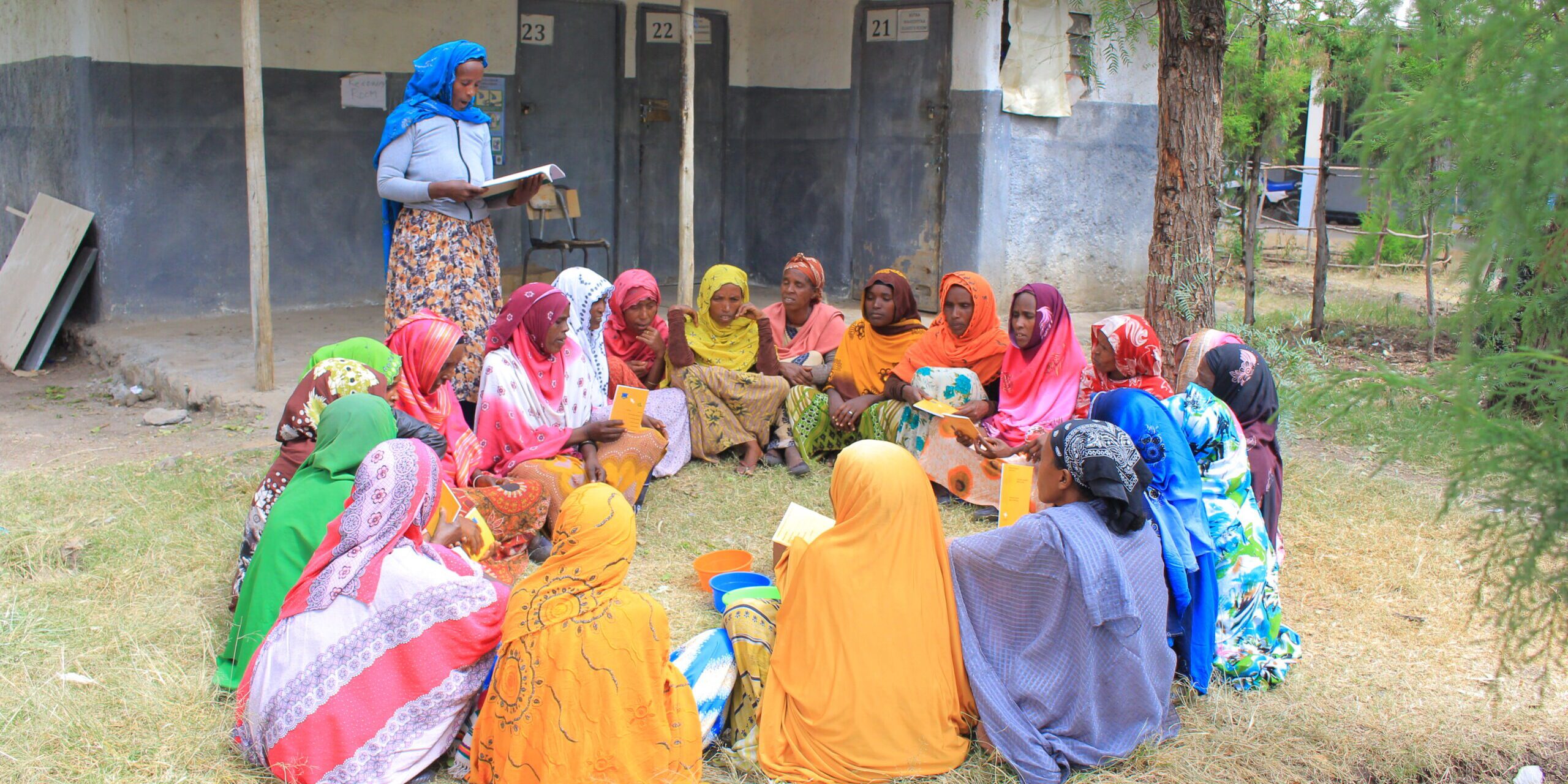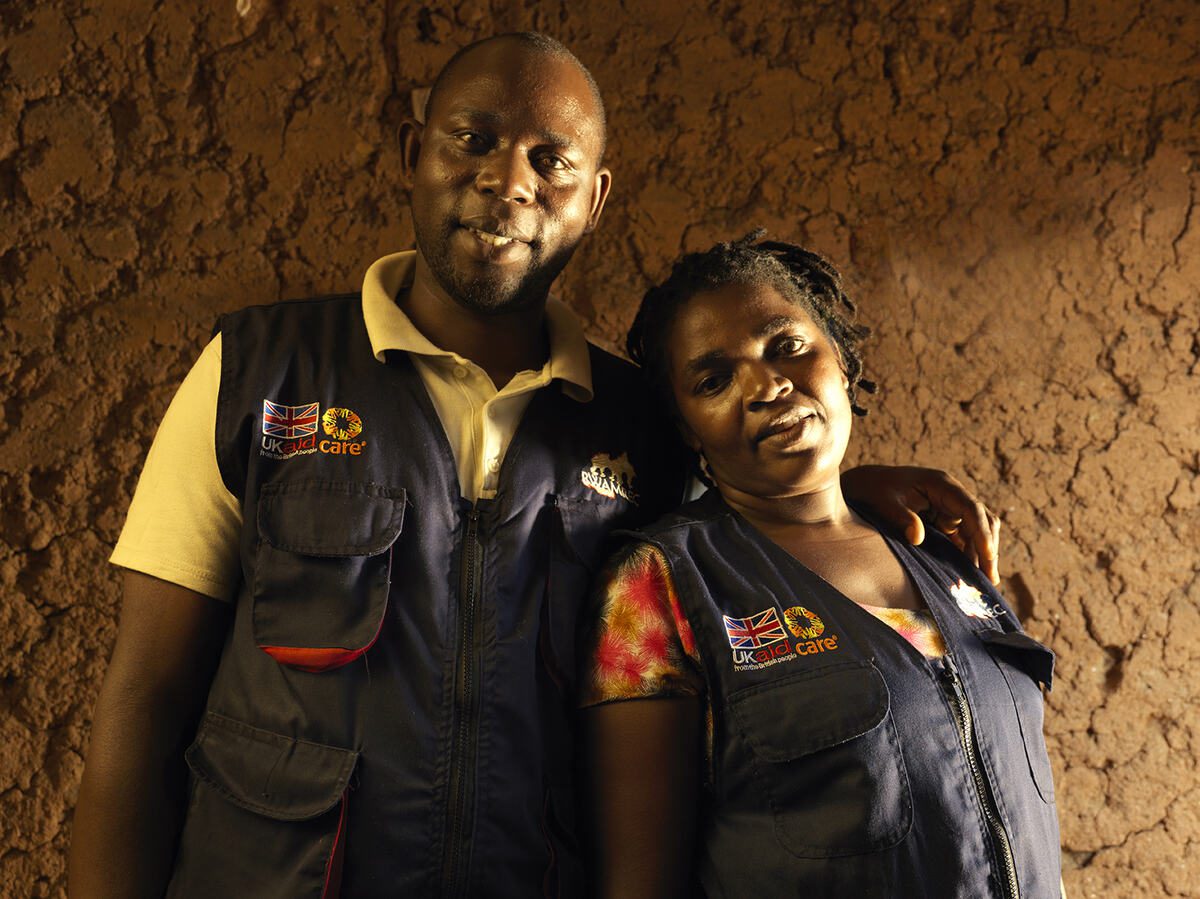Violence against women and girls is increasing around the world
Rates of gender-based violence (GBV) increased dramatically during the COVID-19 pandemic and are worsening by the pressures of an ongoing global hunger crisis. This violence is rooted in gender inequality—and without addressing inequality, women will continue to be both hungry and at risk of violence.
CARE’s new report, GBV and Food Insecurity, highlights the many ways these two challenges are inseparable
Our experience shows that addressing the root causes of GBV, will allow women to be safer and have more access to food, while also producing more food so everyone is less hungry.
From our work around the world, we’ve seen what happens when women and girls feel safe from violence and are valued as equals in their homes and communities. Here are four of the biggest takeaways from the report, and what women in their communities are doing to stand up to these challenges.


Couples in Rwanda reflect on the impacts of unequal power dynamics in their relationships. Peter Caton/CARE
1. Reducing risks helps women and girls access food
When collecting food from emergency food distribution points, the risk of being sexually harassed, assaulted, or even coerced into exchanging sex for food can prevent women and girls from accessing basic necessities when they need them most. One of the best ways to reduce these risks is to make sure women are supported to speak out about the challenges they face.
In Uganda, women in a refugee settlement had to walk nearly six miles to the nearest food distribution point, placing them at increased risk of sexual harassment and abuse along the way.


Halatu. CARE Uganda
Halatu, leader of a women’s group, helped organize a peaceful boycott to successfully advocate for the food distribution point to be moved closer to her community.
2. Addressing root causes of violence helps women and girls eat more
The power dynamics which result in women eating less than men are the same power dynamics that lead to violence within homes. This means that addressing the root causes of violence helps ensure women and girls have equal access to whatever food is available.


Kababush, leader of her community’s Social Analysis & Action (SAA) group. CARE Ethiopia.
In Ethiopia, Simale’s parents held the traditional view that eating certain foods with high protein content during puberty speeds-up girls’ sexual interests.
The Abdiboru project, which aimed to reduce the vulnerability of girls in puberty, encouraged communities to reflect on biases and cultural taboos that discriminate against them.
The result?
Girls like Simale are eating better food and staying in school rather than marrying early.
3. Addressing root causes of violence helps families eat more
When the risk of violence from partners decreases, we’ve seen families become less hungry and increase their odds of having cash income. In Rwanda, engaging couples in conversations on power and gender led to a 55 per cent reduction in women’s risk of intimate partner violence.


Alphonsine and Augustin. Peter Caton/CARE.
For couples like Alphonsine and Augustin, there has been a major change in their relationship. Instead of Alphonsine staying at home and fighting with her husband about money or property, they now work together and face challenges such as drought and rising food costs together.
“My husband now allows me to go out and work because he realized the contribution I can bring in at home,” says Alphonsine. “My income changed because I am now allowed to participate in income-generating activities unlike before.”
She estimates their family’s income has increased by around 40 per cent.
Augustin shares how the couples’ training they joined four years ago has influenced their family’s meal planning.
“We have not reduced what we used to eat but rather put in place an agreement with my wife to each contribute to food costs. I usually contribute lunch costs and my wife dinner costs.”
Soaring food prices mean they have had to reduce how much meat they eat, but Alphonsine is still able to eat her favorite food—Irish potatoes—every day.
4. ADDRESSING ROOT CAUSES OF GBV HELPS EVERYONE EAT MORE
When men like Augustin work with their wives as equal partners, they are less likely to view violence as acceptable. Their household is also more likely to produce more food.
Families in Gitega, Burundi doubled their rice production when agriculture training included a focus on gender equality. This production increase meant women didn’t just have enough to eat at home—they could also sell rice to others so there was more food available to everyone in the community.
At the same time, the proportion of men engaged in the project who believe domestic violence is never acceptable also doubled—showing once again that promoting gender equality makes women safer and less likely to be hungry.


This community in Burundi participated in training on gender equality and agriculture. Irene Nduwayezu/CARE.
For couples like Alphonsine and Augustin, there has been a major change in their relationship. Instead of Alphonsine staying at home and fighting with her husband about money or property, they now work together and face challenges such as drought and rising food costs together.
“My husband now allows me to go out and work because he realized the contribution I can bring in at home,” says Alphonsine. “My income changed because I am now allowed to participate in income-generating activities unlike before.”
She estimates their family’s income has increased by around 40 per cent.
Augustin shares how the couples’ training they joined four years ago has influenced their family’s meal planning.
“We have not reduced what we used to eat but rather put in place an agreement with my wife to each contribute to food costs. I usually contribute lunch costs and my wife dinner costs.”
Soaring food prices mean they have had to reduce how much meat they eat, but Alphonsine is still able to eat her favorite food—Irish potatoes—every day.
To learn more about how food security is relevant to Gender-Based Violence and why CARE believes investing in gender equality is the best way to both make women safer and address the global food crisis.

